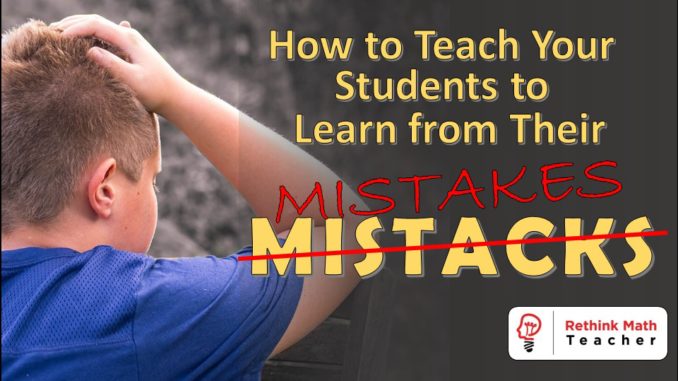
I think you’ll agree that mistakes are a valuable teaching tool.
Yet too often in the traditional model of teaching, students are penalized for making them, or afraid of making them.
The Tale of Two Students
Bobby’s class has just learned how to add integers. The teacher gave a brief lecture and modeled some problems on the board. Now the class is supposed to practice 10 problems. Bobby looks at the first problem: -5 + 9. He can’t remember what he’s supposed to do, and raises his hand for help. The teacher is busy helping another student, and tells Bobby and a few others to wait until she can get to them.
At the end of the individual practice time, the teacher wasn’t able to get to Bobby, as many students had their hand raised, and thus Bobby has not practiced the skill at all.
Malika’s class is reviewing long division with decimals in the divisor and the dividend. The teacher tells the class that they need more practice on this skill, since they did not do well on the last assessment, and hands them a worksheet with 10 problems. She reminds everyone to show their work, and then the class begins working on the worksheet. Malika diligently works through each problem, showing her work, and doing the math exceptionally. She completes all the problems in the allotted time.
But when Malika gets her graded paper back, the next day, she is surprised to see that she got every problem wrong, and she has an F on the top of her paper.
Malika forgot to move the decimal inside the dividend, and thus the decimal is in the wrong place on all of her answers. She is frustrated that the teacher would mark ALL the problems wrong, just because she forgot to move the dot over one space, and now she has an F in the gradebook.
Equally frustrating, though Malika probably can’t articulate it, is that all that time she spent yesterday practicing this skill was not well spent, as she is still making the same mistake. Malika did not ever practice doing the problems correctly. She will not likely remember the proper way, since she spent so much time practicing the wrong way.
Why He didn’t do His Work and Why She Didn’t Learn from Her Mistakes
In the stories above, Bobby never did any of the practice problems in class because he was afraid to make a mistake. As a result, he never practiced the skill he had been taught, and is not likely to have learned it.
Likewise, Malika did all those practice problems without ever realizing she was doing them incorrectly. She was never given the opportunity to learn from her mistakes, because she didn’t know that she was making them. Furthermore, she practiced doing something incorrectly – which reinforces a bad habit.
Remove the Fear of Making Mistakes
As the teacher, you need to create an environment where students are not afraid to make mistakes.
If you find this article helpful, don’t forget to Pin it so you can easily find it later
Reduces Stress
Mistakes often mean a bad grade and possibly humiliation for the student. If they know that they are free to make mistakes without the fear of being embarrassed, ridiculed, or condemned, they are more likely to try at the task at hand, even if it means failing. And if they know that those mistakes won’t hurt their grade, they will gain even more confidence to take risks as they attempt to solve problems.
Encourages Creativity
There are often more than one correct way to solve a problem. If students aren’t afraid of making a mistake, they are more likely to creatively search for new methods. They are also encouraged to try these different methods, which may lead to new discoveries.
Promotes Experimentation
A student will not experiment with alternative problem solving methods if they know that the risk involved may result in getting the wrong answer and being penalized for doing so. We can encourage experimentation and creative thinking by removing this fear.
Increases Understanding
To truly understand something, you must know why things work, and why things do NOT work.
Thomas Edison famously said, “I have not failed, I’ve just found 10,000 ways that did not realize.”`
When students are free from the stress of making mistakes, they experiment and show creativity. Invariably, this leads to incorrect answers, which begs the question, “Why didn’t that work?” Then, the student truly begins to understand the solution.
Creates a Teaching Tool
Mistakes can show us why these work, and why they don’t. Others can learn from our mistakes, and help them as well.
Mistakes can reveal new truths or reveal common errors to avoid. Wise is the teacher who shows common mistakes to the class so that all can learn from them.
Grows Brains
Watch this video on the power of mistakes from KhanAcademy.org
How to Help Students Not Fear Making Mistakes
Communicate the Value of Mistakes
It begins with communication. You must communicate to your class the value of making mistakes. Give examples of mistakes that led to success (like the Sticky Note). Share mistakes that you have made. Highlight common mistakes that could be made when doing problems. Share mistakes with the class and talk about what we can learn from it.
Commit to Grace when Students Make Mistakes
If the teacher is going to talk about the value of mistakes, he/she cannot then get upset with students when they make mistakes. Sometimes this is challenging, but your students will instantly revert to the fear of making mistakes if the teacher gives in to the frustration.
If, however, you do get frustrated with the class, simply admit to them that you made a mistake. And then use it as another teaching opportunity.
My Favorite Mistake
I once knew a math teacher who would have her students do their Bellringer (also called Do Now) problems on index cards. She would then collect them, and share with the class what she called “My Favorite Mistake.”
She would show the incorrect work to the class, ask them to find the mistake, and then share why it was her favorite. Usually, it was her favorite because it showed something the student did understand, or some type of creative thinking. Other times it would just be a common error that she wanted to highlight to her students.
I Do, You Do, We Review!
I am always frustrated when my Math Teachers show their students a new skill, then they model how to use it, and then they give the class a bunch of practice problems. It’s silly to think that they will not make mistakes as they are beginning to work with a brand new skill.
When teachers assign a bunch of problems with no immediate feedback, they waste the opportunity to have everyone increase their comprehension by learning from these mistakes.
Instead, model how to solve the problem, then assign one problem for the class to do independently. Give enough time to solve but not too much. And then review the correct answer and how to get it. You should also highlight common mistakes that people made, and why they made them.
Give Immediate Feedback
When students do independent practice, the purpose of it is to help the students fully comprehend the material, as well as to commit the process to memory.
Neither of these things will happen if the students do not realize that they are making mistakes as they do the work, and thus getting the wrong answer (remember Malika from the opening section?)
Thus, I want my students to have feedback after every practice problem that they do.
If I can assign work on an online program like IXL.com or KhanAcademy.org I will. If that is not possible, I provide answers sheets and encourage the students to check their answer AFTER every problem. And, if they get it wrong, try to figure out why by looking at their notes and re-checking their work.
Retain them Within the Skill until They Master It
One final tip I will give you that I am very passionate about.
If you tell a student that there is no penalty for making mistakes, but you promote them from one skill to the next without ever requiring them to master any of them, you are not allowing them to reap the benefits of making mistakes.
For example. If Billy is wrestling with multiplying two digit numbers by single digit numbers, but he does not fully grasp it, and is then advanced to double digit by double digit multiplication – he will struggle with that even more. He will continue to struggle with the more advanced standards because he lacks the foundational skills necessary to complete these tasks.
If, however, he is allowed to work on the first skill until he masters it, he will then have the tools he needs to master the second skill as well.
By allowing him to continue to work on the first skill until he masters it, you are truly teaching him that it’s okay to struggle, and make mistakes, and that he will not be penalized for making them (including being pushed into a level of work that he is not ready for).
You can accomplish this by making learning stations for each skill, and doing the things above within that station.
To learn more about learning stations, you can read my book or enroll in my online course.
Click here to purchase the book, Reach Them All
Click here to Enroll in the Online Course on Learning Stations

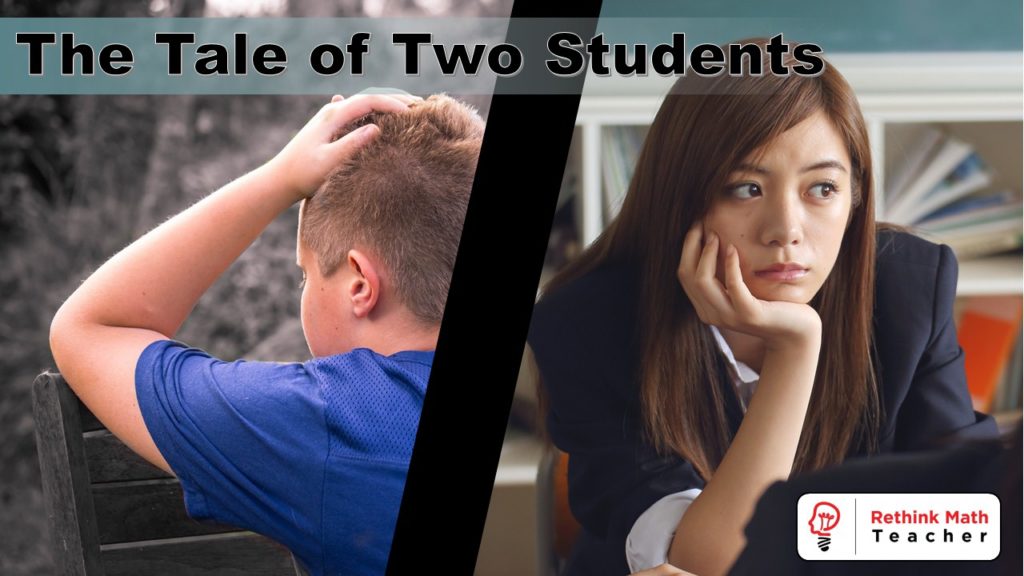
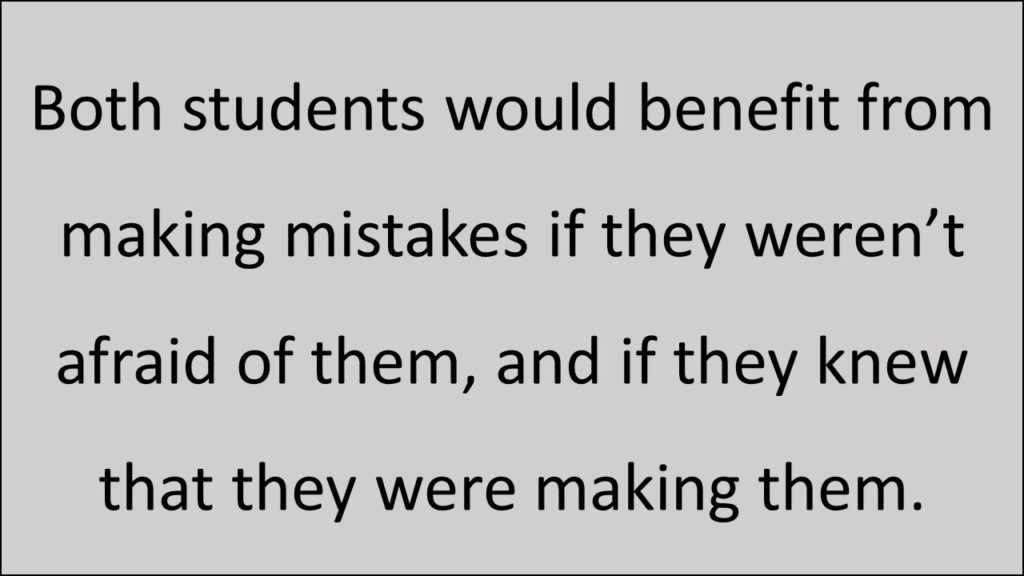
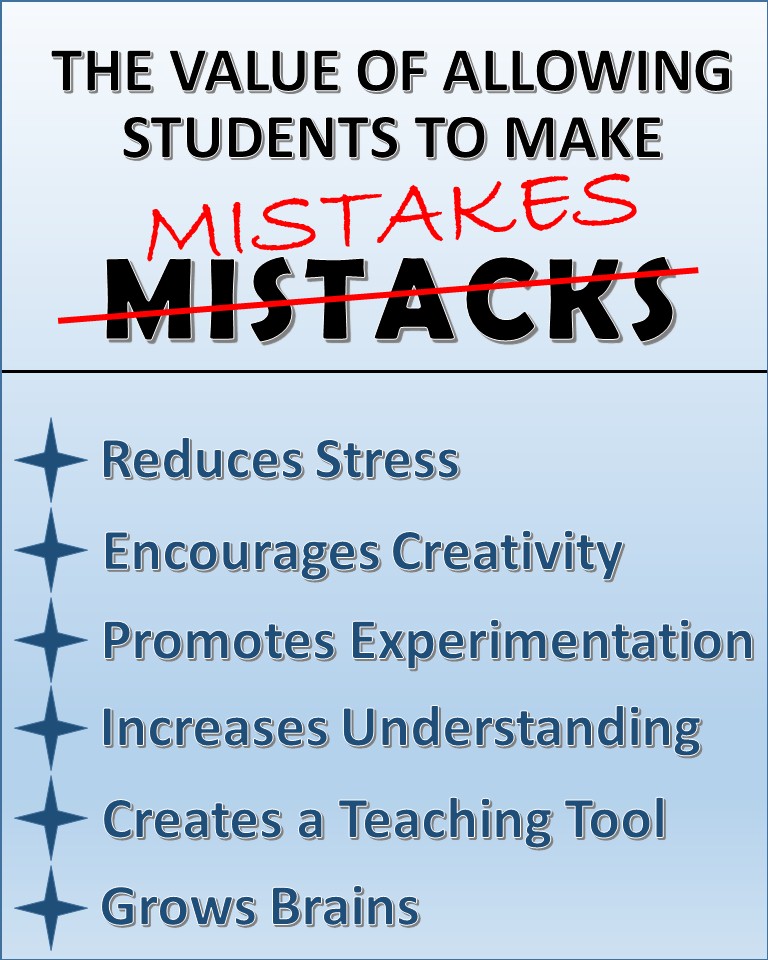
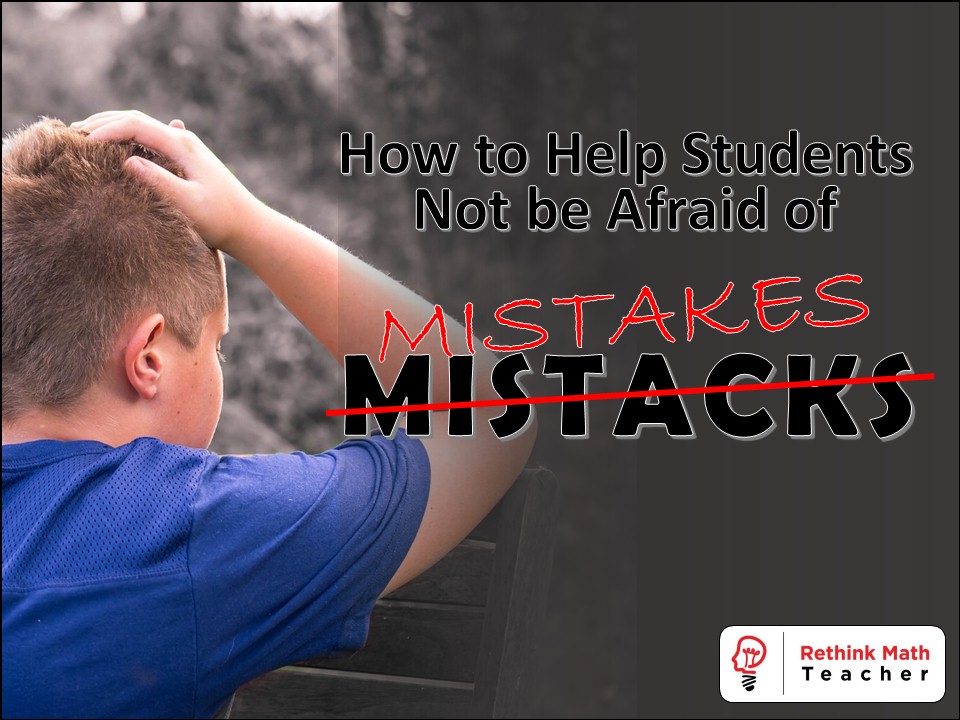
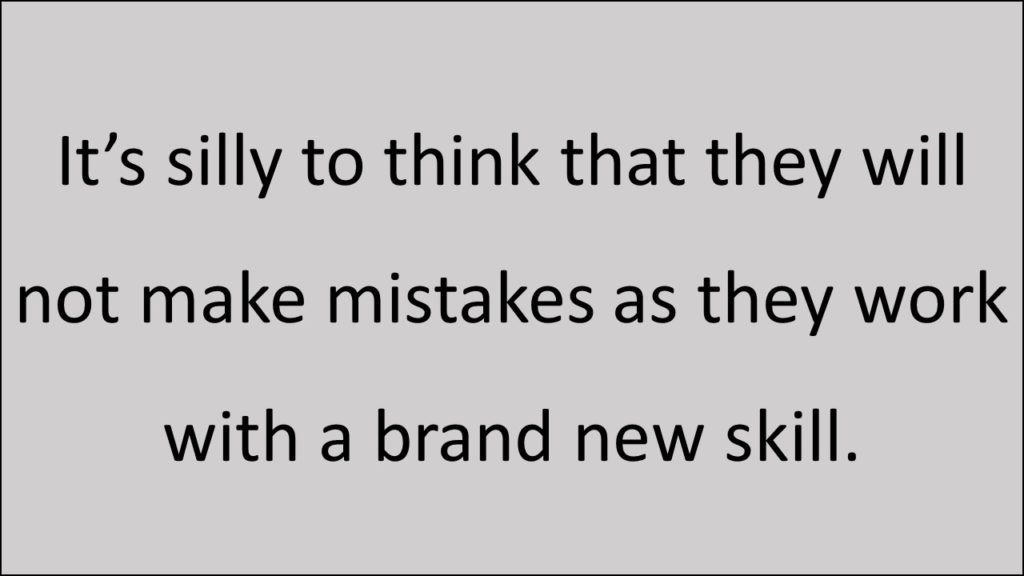
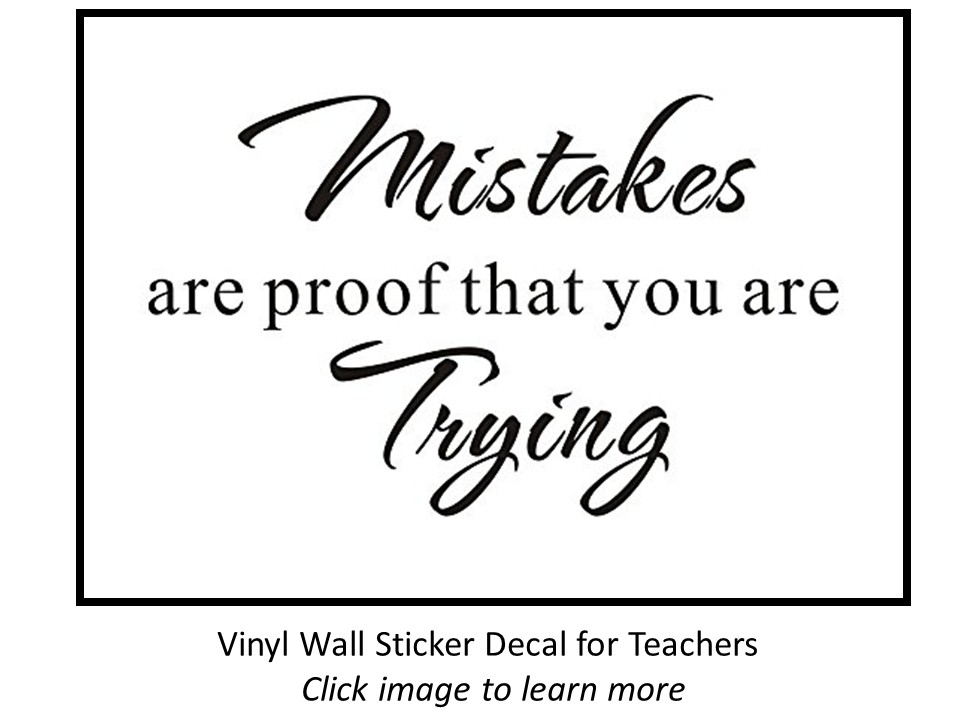
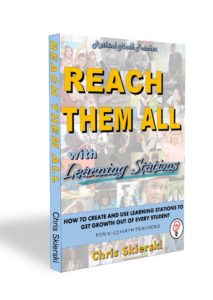
Another great way to encourage kids to learn without fear of mistakes is to have them play a game that practices their skills and gives them immediate feedback. Mistakes don’t get recorded in a gradebook and they get engaged with the game.